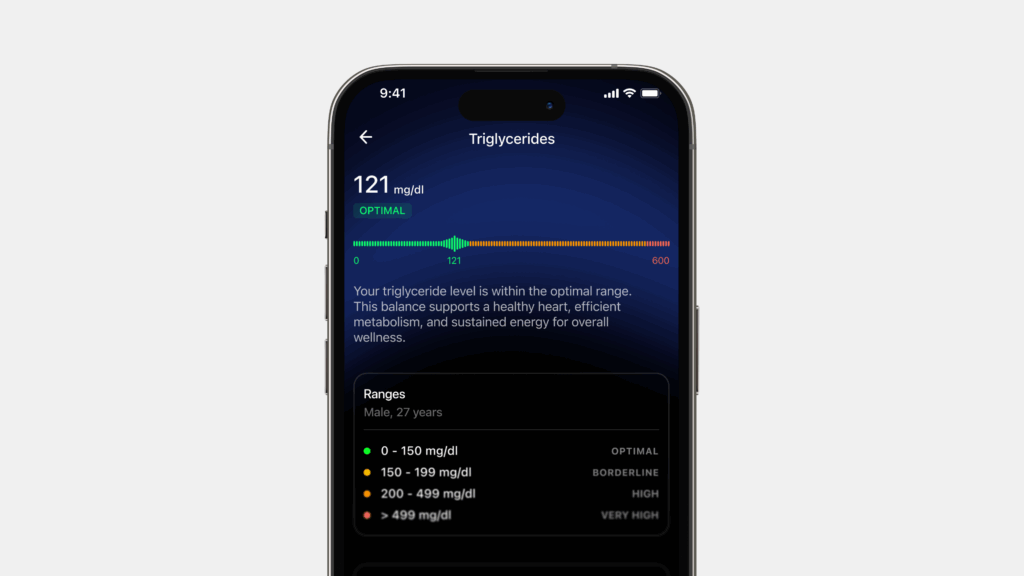Today’s consumer is hit with a dizzying array of options when it comes to measuring health indicators. We’re seeing the development of increasingly sophisticated technologies to measure everything from blood sugar levels to the presence of different species of microorganisms in our gut.
However, an important indicator that is often overlooked is the humble metric of body temperature. Temperature, especially when taken into consideration along with other indicators, can yield important insights that may alert us when things aren’t quite right, aiding us on our journeys towards better health.
Learn: How Ultrahuman Ring AIR tracks skin temperature

Highlights
- The human body temperature is estimated to lie closer to 97.5˚F now, with researchers speculating that improvements in metabolic rates and fewer illnesses have caused a decrease in average temperatures.
- Body temperature varies hugely depending on a person’s age and gender, and time of day.
- Body temperature can reveal a lot about our emotions and truthfulness, with researchers observing a decrease in temperatures of the nose when lies a told.
Body temperature and its importance
The human body is composed of several highly sophisticated systems working in tandem with each other, constantly adapting to the world around us. Thus, naturally, our body temperatures are prone to fluctuations during the day. Nevertheless, our bodies are diligently working to help us maintain our temperatures within a safe range, despite our surroundings.
Read next: Skin temperature explained
When we are too hot, our hypothalamus signals for our blood vessels to dilate to help us lose extra heat. The reverse happens when we are too cold, with our blood vessels narrowing to reduce blood flow to the surface of the skin, thus preserving heat.
Let us dive right into understanding more about the factors that affect our temperature, gleaning insights along the way that help us understand ourselves better. Here are seven cool facts about body temperature (pun intended).

Seven intriguing facts about body temperature
Human beings are getting cooler
In the 19th century, a German doctor by name of Carl Wunderlich calculated the average body temperature to be 98.6˚F (37˚C). This was the result of his taking the axillary—or armpit—temperatures of over 25,000 people. The world has held onto this number ever since, but it may be time to revisit it. Not only does our body’s temperature vary over the course of the day (increasing as the day progresses), our base temperatures seem to have fallen over time.
Several studies conducted between 1935 and 1999 found the average temperatures of the subjects to be a little lower, at 97.5˚F. A more recent study, conducted in 2017 with over 35,000 participants, found average body temperatures to be closer to 97.9˚F. Finally, a fascinating 2020 study done by researchers at Stanford University analysed 160 years’ worth of body temperatures and postulated that body temperatures have, in fact, been decreasing over time—0.03°C per birth decade, to be precise, with normal temperatures being closer to 97.5˚F.
Given that temperature is a useful body marker for basal metabolic rate (with lower rates correlating with increased life spans), the researchers hypothesised that the data reflects the improvements in health and longevity that have been occurring since the industrial revolution. In addition to our comparatively lower metabolic rates now, the team concluded that lower levels of infection and inflammation also correlated with the observed decrease in temperature. So, we’re getting healthier and cooler—quite literally!
The Pinocchio effect
Aside from revealing more about our health, the temperature can also help us identify when someone may be lying! Researchers from the University of Granada found that when subjects were not telling the truth, they experienced a decrease in temperature around the nose by 0.6ºC to 1.2ºC, while that of the forehead increased by 0.6ºC to 1.5ºC.
Moreover, when the difference in temperature between the forehead and nose was greater, it was more likely that the person was lying. A part of the brain in the cerebral cortex called the “insula”—linked to self-awareness and emotional regulation—was linked to this phenomenon. The insula is only activated in the presence of genuine feelings, detecting and regulating body temperature back to normal.
Hence, when these real feelings were absent, a greater temperature change was observed, with a slower recovery to baseline levels, indicating falsehood. The increased mental effort required for us to tell a lie is correlated to the rise in forehead temperature, while the anxiety we feel when doing so brings down the temperature of our noses.
The truth behind the “hot sauna cold plunge” fad
Contrast therapy is one of the latest health fads that take health influencers, athletes, and corporate executives by storm. This involves exposing the body to the contrasting extremes of hot and cold temperatures through alternating hot baths, saunas, and cold showers.
This is touted to promote physical recovery from exercise, based on the concept of vasodilation (in the heat) and vasoconstriction (in the cold), whereby our blood vessels widen or contract respectively to increase or decrease blood flow to the area. This supposedly increases circulation into the tissues of our body.
Others may follow the Wim Hof technique instead, taking only plunges into cold water or icy showers without heat exposure. But does subjecting our natural body temperatures to such extreme temperatures really have such a promising effect? It seems the jury is still out on contrast therapy, with most of its support coming only from anecdotal evidence.
There is also no solid protocol for how such a therapy should be performed or for what duration. However, subjecting the body to extreme cold temperatures has actually been found to help you burn brown fat from shivering.

The red pepper effect
Ever wondered why in several hot countries, like India, we eat so much spicy food despite the hot weather? Surprisingly, it may help to bring our temperatures down! Peppery foods increase thermogenesis (the production of heat), which in turn induces sweating.
This can help us feel cooler by lowering the difference between us and our surroundings and can also induce weight loss. The active substance in chillies, called capsaicin, activates certain receptors on our cells (specifically, TRPV1 receptors), increasing intracellular calcium. This goes on to cause a cascade of cell-signalling interactions that leads to a breakdown of our adipose, or fatty, tissues.
Moreover, not only do peppery foods help us lose weight and feel cooler, such foods produce a stimulating, awakening effect, ideal for tackling those sleepy summer afternoons. So maybe the frequent claims made by a plethora of weight-loss influencers to include cayenne pepper in our diets might be worth their salt (or pepper!)
Our temperature changes over the course of the day
Our body temperatures also change over the course of the day by around 0.5°C (0.9 °F), following our circadian rhythms. Our body temperature is at its lowest a few hours before we wake up—at around 4 am—peaking in the early evening between 4-6 pm. This change in temperature corresponds to our activity levels and metabolic activity, which is lowest when we sleep but peaks during the day.
Temperature varies with gender and age
Human body temperature not only changes by the weather but is also affected by age. You may have noticed that older people tend to feel the cold a little more, even when the rest of us find it relatively pleasant. This is true because of their age and the physiological changes that occur over time. With age, the layer of body fat under the skin begins to thin, thus increasing susceptibility to the cold.
Metabolism also slows down over the years, causing a further decline in body temperature. Moreover, there is also a temperature difference between men and women, with women typically feeling the cold more than men, linked to, as is typically observed, their lower metabolic rates. They also have less muscle per gram than men to keep them warm, as well as higher core temperatures and colder extremities (hands and feet).
Sleep and temperature
Since we spend about one-third of our life sleeping, it is always good to pause and consider what temperatures our bodies prefer while sleeping to really optimise it. Our bodies follow the circadian rhythm, a biological rhythm that guides bodily functions according to the presence or absence of light. This sleep rhythm is also impacted by body temperatures, so it is important to pay some heed to it as the weather changes.
Matthew Walker, a sleep researcher and author of the international bestseller Why We Sleep, found that the ideal temperature to sleep in is 65ºF (18.3ºC). During REM sleep, our bodies may lose their ability to control our temperatures in response to the environment, so keeping temperatures stable and low can help promote good sleep, in line with the need our bodies have to drop core temperatures by about 2 to 3ºC.
Though it may sound paradoxical, a hot bath before bed can help you drop your body temperatures, ensuring a relaxed, pleasant sleep!
Conclusion
Our body temperature modifies in response to the world around us. It is a metric that serves as an important barometer of our health, changing as we age, fall sick or eat certain foods. Over the years, our increased life spans and health have correlated with a reduction in basal body temperatures as we experience lower levels of inflammation and illness.
We have also enriched our understanding of the ideal temperatures we need for sleep and observed that gender, age and even the food we eat could play a huge role in affecting our temperatures. Our body temperatures tell us a lot more than just whether we have a fever or not; they provide a fascinating set of insights into how our own bodies are responding to our environments. Paying a little more attention to them may reveal much more than you expect.
Disclaimer: The contents of this article are for general information and educational purposes only. It neither provides any medical advice nor intends to substitute professional medical opinion on the treatment, diagnosis, prevention or alleviation of any disease, disorder or disability. Always consult with your doctor or qualified healthcare professional about your health condition and/or concerns before undertaking a new healthcare regimen including making any dietary or lifestyle changes.
References
- Normal Temperature: What Should Your Body Temp Be?
- Time to redefine normal body temperature?
- Decreasing human body temperature in the United States since the Industrial Revolution
- The most reliable scientific model to date for detecting when a person is lying, based on thermography
- The mental nose and the Pinocchio effect: Thermography, planning, anxiety, and lies – Moliné – 2018 – Journal of Investigative Psychology and Offender Profiling – Wiley Online Library







